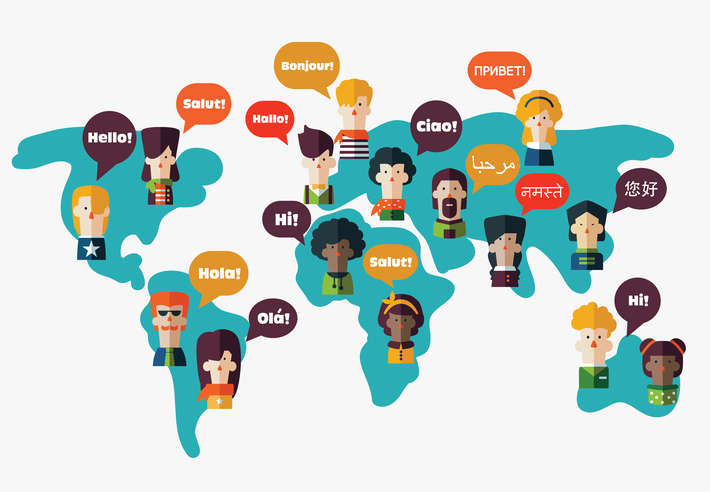What impact can this simple exchange have on a newly developing cross-cultural relationship?
I have an American colleague who is easygoing, friendly, and wants to build trust with his associates in France. On a recent business trip to Lyon, he noticed that he was often addressed by his surname. “It felt stiff and strange,” he said, “and even a bit unfriendly. Is there anything I do to fix this?”
The first step: Knowing that a communication gap like this can often be attributed to cultural preference. I have no doubt my friend’s colleagues are just as interested in building trust with him as he is with them! But different communication approaches can lead to misperceptions, and a slow start at establishing a meaningful business relationship.
Cultures that have a preference for Formal Communication, like France, follow strict rules about forms of address, especially based on age and status. Use of a first name is by invitation only, and highly dependent of whom you are addressing. Children are taught from a young age that questioning or disagreeing with authority is not acceptable, and this attitude permeates well into adult life.
Informal Communication orientation cultures, like the United States, use more flexibility in who and how you address others. Use of a person’s first name comes with ease, and is expected in return. Expressing an opinion or questioning a decision regardless of power or authority is acceptable. Reticence in this behaviors can be perceived as reluctance, and even negativity.
Another cultural preference that can influence business relationships is Power Distance. Renowned social psychologist Dr. Geert Hofstede defines Power Distance as the extent to which less powerful members of organizations accept an unequal distribution of power.
A Hierarchical orientation is formal, with a top down approach. The person with power has the solutions. Subordinates rely on managers for direction. Employees are expected to complete tasks as directed, and the powerful are entitled to privileges. You will find that you have to assert more positional authority in order to achieve results.
Cultures with a Participative orientation are more informal. Ideas and suggestions can come from any organizational level. Subordinates are expected to be consulted, and they participate in decision making. There are fewer levels of management with a matrix structure. Completed work depends on collaboration, and employees have equal say. In general, it is more important to get the work done than it is to go through appropriate channels.
The impact of Power Distance can be significant unless you are aware of the potential for communication gaps in doing business, and what you can do to close them.
Here are a few tips for a Participative oriented person working in a Hierarchical culture from Catherine Mercer Bing’s book Many Cultures, One Team: Build Your Cultural Repertoire.
1. Leverage the Power Position of senior management to drive projects, make introductions and connections, and communicate expectations.
2. When dealing with change, tell subordinates what to do differently. Do not leave it to them to figure out.
3. Use legitimate power to exercise authority.
4. Use an approach with higher-ups that is perceived as a “help me understand” posture.
5. Use the proper organizational channels.
6. Respect the formality of the hierarchy.
What are your own personal cultural preferences? What are the preferences in the countries and cultures where you are building business relationships? Find out by visiting the Culture Coach Online, and completing your Cultural Profile Questionnaire.
Written by Diane McGreal, Living Abroad Cultural Advisor


